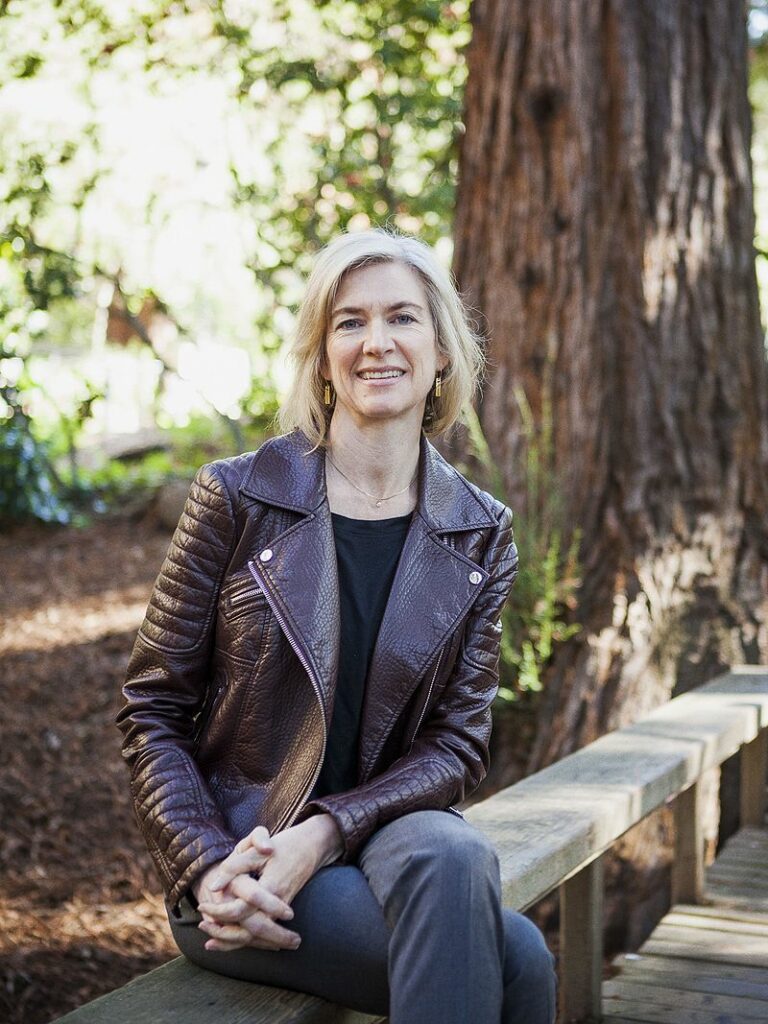Science
Nobel-winning women hope to inspire new generation of scientists – ZME Science

This year, Jennifer Doudna and Emmanuelle Charpentier have become the first all-woman team to be awarded a Nobel science prize for their contributions on gene editing. This years’ winners also featured astronomer Andrea Ghez and poet Louise Glück.
It’s extremely unusual for this many women to be celebrated with Nobel prizes, and the laureates hope they can inspire a new generation of researchers. It’s “great for especially younger women to see this and to see that women’s work can be recognised as much as men’s,” Doudna told reporters.
Since the Nobel prize was first awarded in 1901, only a handful of women have ever received one in the sciences: four in physics (including two in the past three years), seven in chemistry (including two this year), two in economics, and 12 in medicine or physiology. Statistically speaking, women are dramatically underrepresented in the Nobel awards, even more than in academia in general. Furthermore, stories of women’s work being overlooked or outright misattributed are already commonplace — with Rosalind Franklin being only the most famous example.
ADVERTISEMENT
But that might be starting to change.
It’s a “historic moment” to have so many female laureates, says Pernilla Wittung Stafsheden of the Royal Swedish Academy of Sciences, part of the chemistry committee. It was hard to overlook Doudna and Charpentier’s development of CRISPR-Cas9, a tool that allows researchers to cut and edit the genetic code of plants and animals. It’s been less than a decade since their seminal paper, and various teams are already using it to search for treatments for cancer, Alzheimer’s, blindness, and many more — and the method has applications in agriculture as well.


For the laureates, this is more than just a celebration of their work: it’s a chance to spark the flame of new generations.
“My wish is that this will provide a positive message to the young girls who would like to follow the path of science, and to show them that women in science can also have an impact through the research that they are performing,” Charpentier said.
Doudna sees it as a chance for women in science to seize equality:
ADVERTISEMENT
“I think for many women there’s a feeling that no matter what they do their work will never be recognised as it might be if they were a man,” she said. “And I’d like to see that change, of course, and I think this is a step in the right direction.”
Their comments echo those of Andrea Ghez, who after receiving the physics prize together with Roger Penrose and Reinhard Genzel stated:
“I hope I can inspire other young women into the field. It’s a field that has so many pleasures, and if you are passionate about the science, there’s so much that can be done.”


Other scientists agree that it could be a turning point. When it comes to diversity in academia, progress is still slow and these high-stakes awards could have a substantial impact. James Turner, of the Francis Crick Institute, said the Nobel was a “triumph” for women in science.
“Thanks to their discoveries, genetic modification experiments that previously took us years to complete can be achieved within weeks,” he said.
Throughout much of the academic world, there were similar responses.
“I absolutely agree that both Charpentier and Ghez will be role models for young women in Science because then it becomes more ‘normal’ to see women winning these prizes and for younger scientists not to think that this is the domain of an old white man,” Roisin Owens, biochemical engineer at University of Cambridge, told AFP.
But many caution this is still not nearly enough. For women at the start of the career especially, the continued obstacles are still there and won’t vanish after a few Nobels. Fatima Tokhmafshan, a geneticist and bioethicist at the Research Institute of the McGill University Health Centre in Canada who collected magazine interviews with Charpentier and Doudna when she was studying how to use CRISPR says it’s demoralizing for young women students when they learn that historical female researchers were overshadowed or unrecognized. She cautions that for many women in academia, things won’t change that much: women “do not earn as much as their male peers, don’t get to publish as much as their male peers, and don’t hold positions of power”.
But even as this is only a step in a lengthy marathon, it’s still a step, and potentially, an indication that a change may be coming.
When Donna Strickland won the Nobel Prize for Physics in 2018 for her work on high-intensity lasers, she was the first female laureate in the field since 1963. At the Lindau Nobel Meeting in 2019, she quipped that she was the only female laureate — and hoped that next year she won’t still be the only one. Her wish seems to be coming true, and this is good not just for women in science, but for science in general.
Science
SpaceX launch marks 300th successful booster landing – Phys.org


SpaceX sent up the 30th launch from the Space Coast for the year on the evening of April 23, a mission that also featured the company’s 300th successful booster recovery.
A Falcon 9 rocket carrying 23 of SpaceX’s Starlink internet satellites blasted off at 6:17 p.m. Eastern time from Cape Canaveral Space Force Station’s Space Launch Complex 40.
The first-stage booster set a milestone of the 300th time a Falcon 9 or Falcon Heavy booster made a successful recovery landing, and the 270th time SpaceX has reflown a booster.
This particular booster made its ninth trip to space, a resume that includes one human spaceflight, Crew-6. It made its latest recovery landing downrange on the droneship Just Read the Instructions in the Atlantic Ocean.
The company’s first successful booster recovery came in December 2015, and it has not had a failed booster landing since February 2021.
The current record holder for flights flew 11 days ago making its 20th trip off the launch pad.
SpaceX has been responsible for all but two of the launches this year from either Kennedy Space Center or Cape Canaveral with United Launch Alliance having launched the other two.
SpaceX could knock out more launches before the end of the month, putting the Space Coast on pace to hit more than 90 by the end of the year, but the rate of launches by SpaceX is also set to pick up for the remainder of the year with some turnaround times at the Cape’s SLC-40 coming in less than three days.
That could amp up frequency so the Space Coast could surpass 100 launches before the end of the year, with the majority coming from SpaceX. It hosted 72 launches in 2023.
More launches from ULA are on tap as well, though, including the May 6 launch atop an Atlas V rocket of the Boeing CST-100 Starliner with a pair of NASA astronauts to the International Space Station.
ULA is also preparing for the second launch ever of its new Vulcan Centaur rocket, which recently received its second Blue Origin BE-4 engine and is just waiting on the payload, Sierra Space’s Dream Chaser spacecraft, to make its way to the Space Coast.
Blue Origin has its own rocket it wants to launch this year as well, with New Glenn making its debut as early as September, according to SLD 45’s range manifest.
2024 Orlando Sentinel. Distributed by Tribune Content Agency, LLC.
Citation:
SpaceX launch marks 300th successful booster landing (2024, April 24)
retrieved 24 April 2024
from https://phys.org/news/2024-04-spacex-300th-successful-booster.html
This document is subject to copyright. Apart from any fair dealing for the purpose of private study or research, no
part may be reproduced without the written permission. The content is provided for information purposes only.
Science
Wildlife Wednesday: loons are suffering as water clarity diminishes – Canadian Geographic


The common loon, that icon of northern wilderness, is under threat from climate change due to declining water clarity. Published earlier this month in the journal Ecology, a study conducted by biologists from Chapman University and Rensselaer Polytechnic Institute in the U.S. has demonstrated the first clear evidence of an effect of climate change on this species whose distinct call is so tied to the soundscape of Canada’s lakes and wetlands.
Through the course of their research, the scientists found that July rainfall results in reduced July water clarify in loon territories in Northern Wisconsin. In turn, this makes it difficult for adult loons to find and capture their prey — mainly small fish — underwater, meaning they are unable to meet their chicks’ metabolic needs. Undernourished, the chicks face higher mortality rates. The consistent foraging techniques used by loons across their range means this impact is likely echoed wherever they are found — from Alaska to Canada to Iceland.
The researchers used Landsat imagery to find that there has been a 25-year consistent decline in water clarity, and during this period, body weights of adult loon and chicks alike have also declined. With July being the month of most rapid growth in young loons, the study also pinpointed water clarity in July as being the greatest predictor of loon body weight.
One explanation for why heavier rainfall leads to reduced water clarity is the rain might carry dissolved organic matter into lakes from adjacent streams and shoreline areas. Lawn fertilizers, pet waste and septic system leaks may also be to blame.
The researchers, led by Chapman University professor Walter Piper, hope to use these insights to further conservation efforts for this bird Piper describes as both “so beloved and so poorly understood.”
Return of the king
Science
Giant prehistoric salmon had tusk-like teeth for defence, building nests


|
|
The artwork and publicity materials showcasing a giant salmon that lived five million years ago were ready to go to promote a new exhibit, when the discovery of two fossilized skulls immediately changed what researchers knew about the fish.
Initial fossil discoveries of the 2.7-metre-long salmon in Oregon in the 1970s were incomplete and had led researchers to mistakenly suggest the fish had fang-like teeth.
It was dubbed the “sabre-toothed salmon” and became a kind of mascot for the Museum of Natural and Cultural History at the University of Oregon, says researcher Edward Davis.
But then came discovery of two skulls in 2014.
Davis, a member of the team that found the skulls, says it wasn’t until they got back to the lab that he realized the significance of the discovery that has led to the renaming of the fish in a new, peer-reviewed study.
“There were these two skulls staring at me with sideways teeth,” says Davis, an associate professor in the department of earth sciences at the university.
In that position, the tusk-like teeth could not have been used for biting, he says.
“That was definitely a surprising moment,” says Davis, who serves as director of the Condon Fossil Collection at the university’s Museum of Natural and Cultural History.
“I realized that all of the artwork and all of the publicity materials and bumper stickers and buttons and T-shirts we had just made two months prior, for the new exhibit, were all out of date,” he says with a laugh.
Davis is co-author of the new study in the journal PLOS One, which renames the giant fish the “spike-toothed salmon.”
It says the salmon used the tusk-like spikes for building nests to spawn, and as defence mechanisms against predators and other salmon.
The salmon lived about five million years ago at a time when Earth was transitioning from warmer to relatively cooler conditions, Davis says.
It’s hard to know exactly why the relatives of today’s sockeye went extinct, but Davis says the cooler conditions would have affected the productivity of the Pacific Ocean and the amount of rain feeding rivers that served as their spawning areas.
Another co-author, Brian Sidlauskas, says a fish the size of the spike-toothed salmon must have been targeted by predators such as killer whales or sharks.
“I like to think … it’s almost like a sledgehammer, these salmon swinging their head back and forth in order to fend off things that might want to feast on them,” he says.
Sidlauskas says analysis by the lead author of the paper, Kerin Claeson, found both male and female salmon had the “multi-functional” spike-tooth feature.
“That’s part of our reason for hypothesizing that this tooth is multi-functional … It could easily be for digging out nests,” he says.
“Think about how big the (nest) would have to be for an animal of this size, and then carving it out in what’s probably pretty shallow water; and so having an extra digging tool attached to your head could be really useful.”
Sidlauskas says the giant salmon help researchers understand the boundaries of what’s possible with the evolution of salmon, but they also capture the human imagination and a sense of wonder about what’s possible on Earth.
“I think it helps us value a little more what we do still have, or I hope that it does. That animal is no longer with us, but it is a product of the same biosphere that sustains us.”
This report by The Canadian Press was first published April 24, 2024.
Brenna Owen, The Canadian Press





-
News23 hours ago
Amid concerns over ‘collateral damage’ Trudeau, Freeland defend capital gains tax change
-
Art20 hours ago
The unmissable events taking place during London’s Digital Art Week
-
News24 hours ago
U.K. tabloids abuzz with Canadian’s ‘Loch Ness monster’ photo
-



 Politics24 hours ago
Politics24 hours agoPolitics Briefing: Saskatchewan residents to get carbon rebates despite province’s opposition to pricing program
-
News22 hours ago
What is a halal mortgage? How interest-free home financing works in Canada
-



 Politics15 hours ago
Politics15 hours agoOpinion: Fear the politicization of pensions, no matter the politician
-
Economy21 hours ago
German Business Outlook Hits One-Year High as Economy Heals
-
Media14 hours ago
B.C. puts online harms bill on hold after agreement with social media companies





